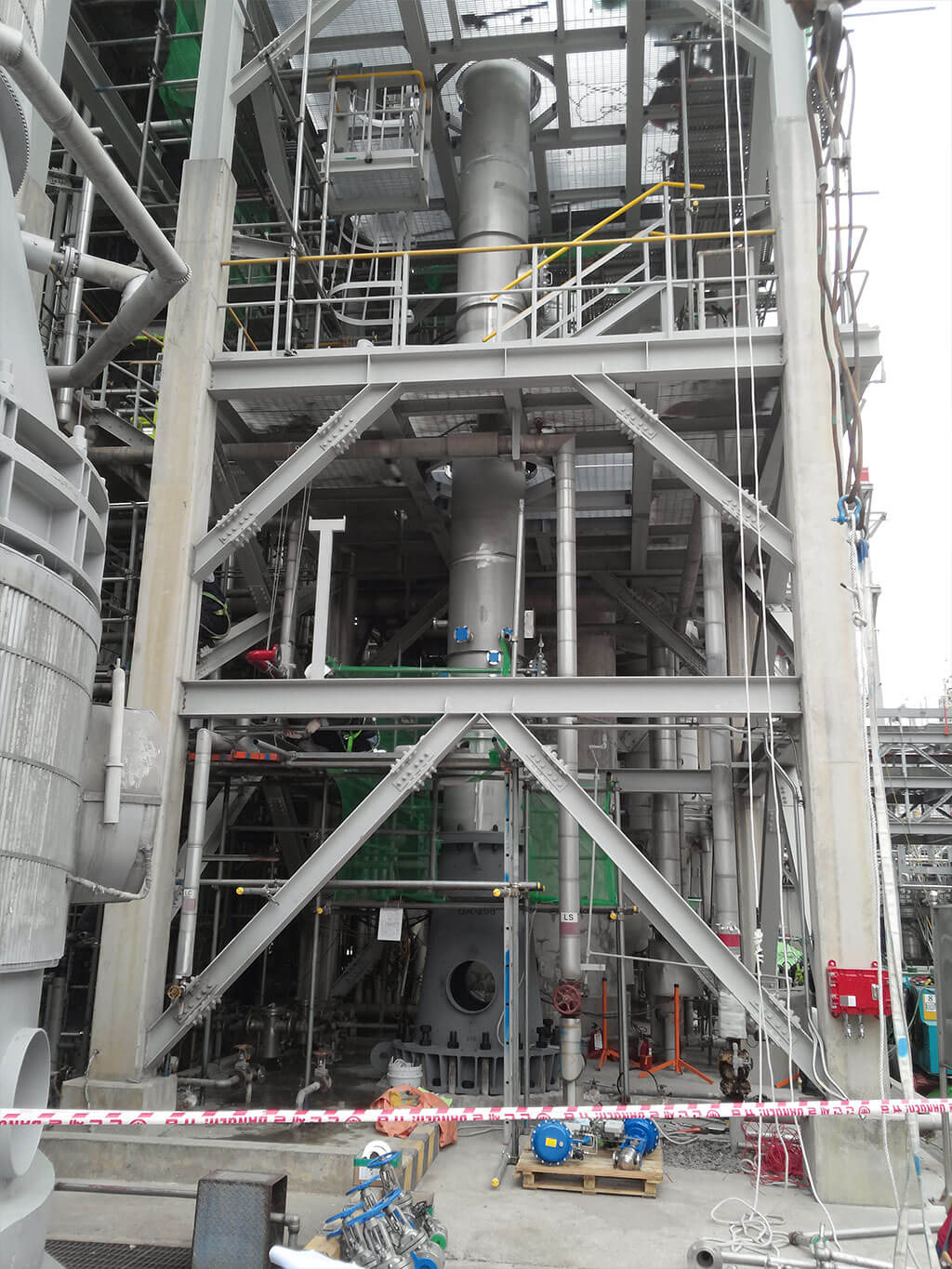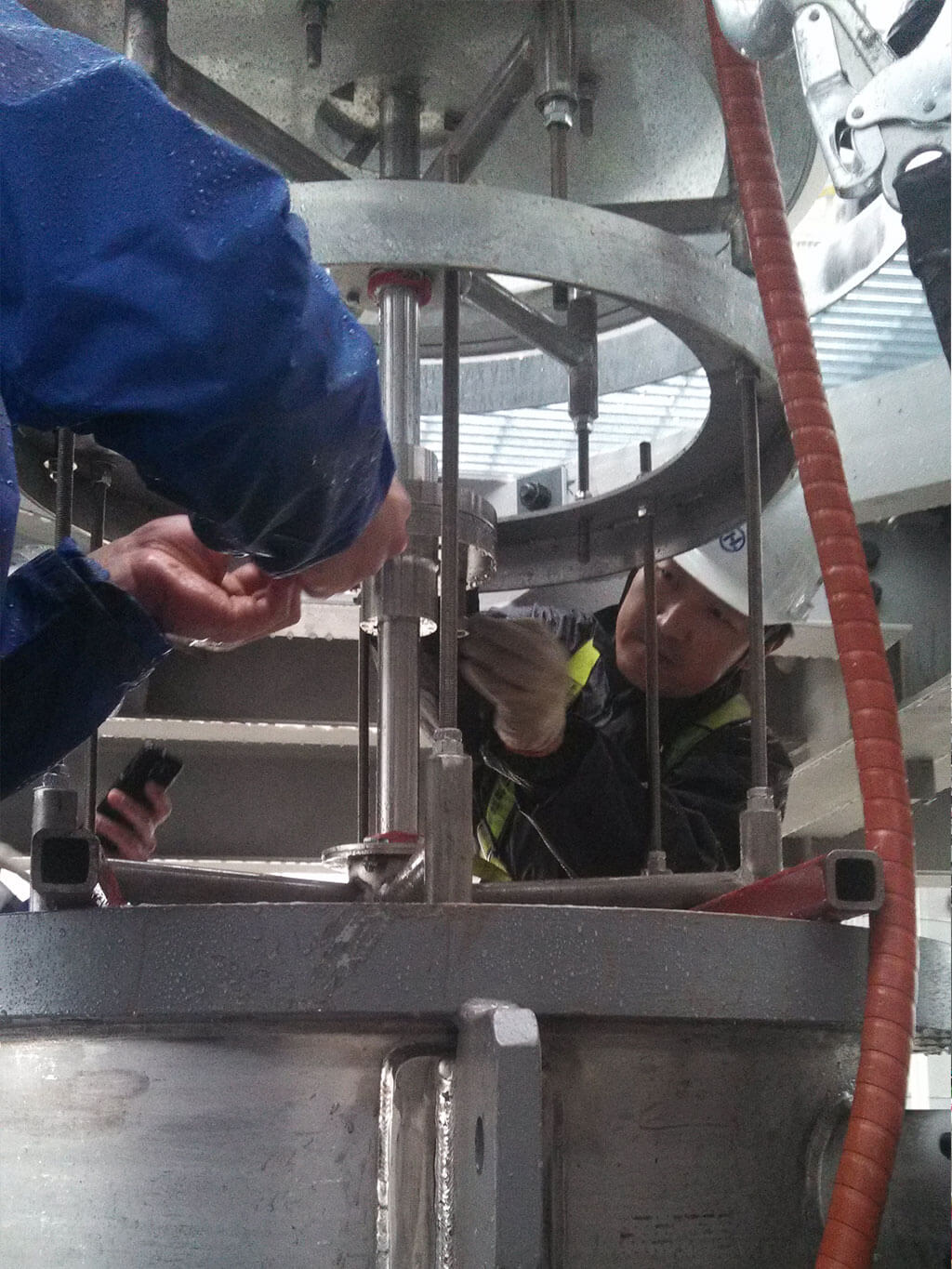This website uses cookies so that we can provide you with the best user experience possible. Cookie information is stored in your browser and performs functions such as recognising you when you return to our website and helping our team to understand which sections of the website you find most interesting and useful.
Challenge
The client provided the pilot testing facility with drums of their aqueous feed composed of 65-70% of an organic acid, 2-3% of a carboxylic acid, a small amount of heavy impurities and water. Testing with the toluene spiked with the organic acid using a 3” diameter, 60-stage pilot SCHEIBEL®column revealed that the organic acid extraction process has an unfavorable density gradient for both phases across the column, i.e. the density at the top of the column is greater than at the bottom. Also, due to the high concentration of the acid in the feed, the hydraulic behavior is different at the top of the column where the feed comes in and there is greater mass transfer than the behavior at the bottom of the column where there is very little mass transfer. Although these phenomenon were expected, pilot testing was critical to defining the ideal separation process.
SOLUTION
Koch Modular engineers decided that a SCHEIBEL®column would work best in overcoming the challenges in this organic acid extraction process. To tackle the varying levels of mass transfer taking throughout the extraction column, impeller diameter was varied across the column, with smaller impellers at the top and larger impellers at the bottom where less mass transfer is taking place. The mass transfer performance is further improved by the internal baffling that minimizes any back mixing in the SCHEIBEL®column. However, despite the inner baffling, the tendency to backmix increases as any extraction column is scaled up and the diameter is increased. Consequently, although 60 agitated stages were run in the pilot plant, a 20% contingency was added to the commercial column for a total of 72 stages.
During commercial column start-up, significant buildup of a rag layer at the interface at the bottom of the column was observed. Koch Modular engineers had intentionally placed nozzles around the interface and advised for the client to have a rag layer filtration system since the tendency of the rag layer to form was also observed during pilot testing. The issue was resolved by intermittently withdrawing the rag layer and passing it through a filter to remove interfacial contamination. Returning the recycled liquid to the same location where it was withdrawn would mess up the interface control, so it was instead reintroduced with the toluene feed at the bottom of the column.
RESULTS
Ultimately, the SCHEIBEL®Column supplied by Koch Modular successfully reduced the feed containing 65-70% organic acid to the design target of < 1.7% acid in the raffinate. A system designed to remove rag layer buildup at the interface was also installed. The column has been successfully running with no issues since installation.


